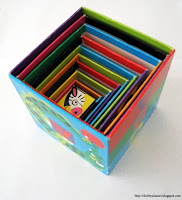Six Little Pigs by Harvey Peake.
Oldest one was musical, that left only five.
Six Little Pigs by Harvey Peake.
 |
| This Apple Math Pattern Illustration is in Creative Commons. |
The Game Rules: Above is a illustration of how teachers might assemble an apple tree on a bulletin board in their classrooms for students to participate in math exercises. One the left is a simple apple shape for cutting from red, green or yellow construction paper. Teachers may post either the answers or problems in advance to the board on her own set of apples. Then students may write out the answers to the apple math game on their own apples and post these on top of the teachers sample problems. For those who get the answers or questions wrong...their apples will fall beneath the tree when the teacher checks their answers.
The printable clock can be arranged to keep the scores of school games and contests. Individual teachers will undoubtedly have many other ideas for adapting this template to their classroom work. When each student has his own clock with which to work, he or she can be taught the way the hands move, how the big hand goes fast while the little one moves more slowly, and how the clock shows but half a day's time, etc...
 |
| A traditional clock face with minute and hour hands. |
What are you able to build with your blocks?Castles and palaces, temples and docks.Rain may keep raining, and others go roam,But I can be happy and building at home.
 |
| Portrait of Friedrich Froebel. |
 |
| Using six trapezoids and one hexagon, shape a much larger hexagon. |
 |
| Form a large blue star shape using six smaller rhombuses/diamond tiles. |
 |
| Use one yellow hexagon, one red trapezoid, three green triangles, and two blue rhombuses to make one large triangle. |
 |
| Use three red trapezoids, three green triangles and two blue rhombuses to make a large triangle. |
 |
| Shape the center of a larger hexagon using three blue rhombuses and the outer sides of this hexagon with red trapezoids. |
 |
| Use a rhombus, a triangle and a trapezoid to make the center of a flower including six, yellow hexagon petals. |
 |
| Use the shapes above: two trapezoids, two triangles and two rhombuses to make one large trapezoid. |
 |
| Animal stacking blocks for developing seriation skills. |
 |
| My alphabet, animal stacking blocks are stacked according to size. |
 |
| These elephants with big tusks and long trunks were fun for little ones to arrange from large, to larger, to largest etc... |
 |
| Students practiced arranging rhinos according to size in my classroom several years ago. |
 |
| A tufted ape clip art image. |
 |
| A giant sea turtle clip art image. |
 |
| A striped zebra clip art image. |
 |
| I selected the free teddy bear coloring page from this website for my project. |
 |
| Three year old students shape Play-Doh to form numbers 0 - 9 on top of these adorable teddy bear number mats. |
 |
| Original canister of Playdough |
 |
| This is a wonderful book for developing geometric art projects for very young students. |
 |
| Step-by-Step way to both fold paper to draw a cow's head and also how to draw details of the cow's features. |
 |
| Here is my Jack-O-Lantern version of the same project. I have also included a little "illuminated candle on every page as well! |
 |
| A free Jumping Jack pattern by Kathy Grimm. |
 |
| A sampling of trace, cut and paste developmental learning activities coming soon to this blog. |
 | |
| This picture of Fall foliage was created entirely with dots. |